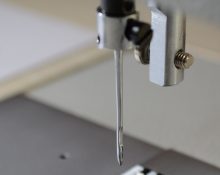A sewing machine is a useful and very convenient household appliance that greatly simplifies the process of creating clothes, textiles, and various interior items. One of its main elements is a needle, which, however, is also necessary for manual work. It’s just that it differs noticeably from the usual sewing machines in its appearance and design.
Machine needle device
If an ordinary needle for hand sewing looks like a metal pointed rod with a hole at one end, then a machine needle is a complex part. Its design may be incomprehensible to a novice craftswoman and sometimes even threading it becomes impossible. And the purchase can cause certain problems, because many factors must be taken into account. The first thing you need to pay attention to is the type of needle itself and its markings. Depending on them, you can understand what material it is intended for.

As for the design of a sewing machine needle, it has remained virtually unchanged since its inception. It consists of the following elements:
- an ear that gradually turns into a long and short groove;
- kernel;
- flask with a flat cut (flat).
The bulb is the upper and thickest part of the needle. The groove is located along the bottom and middle part - it houses the thread. The point is located at the bottom of the needle, and just above it is the eye. On the opposite side of the long groove there is a short one. The thread pulled through it sags, forming a loop, while the needle is raised. The shuttle picks it up, creating a stitch.
At the moment when the needle is at the top point of lifting, it tightens the thread and fixes the stitch. After this, the tissue is advanced, then everything is repeated again. The process may vary depending on what stitch the machine is capable of creating.


 0
0





